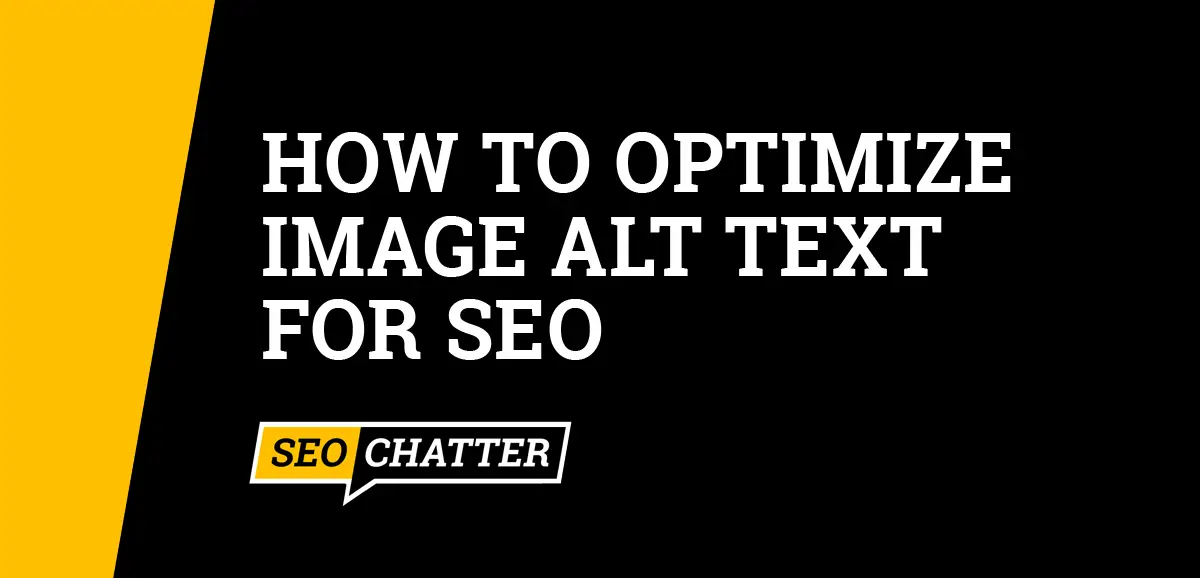This search engine optimization (SEO) guide explains how to optimize image ALT text for SEO.
Below, you’ll find a list of the top image ALT text optimization tips you can use to improve the rankings and traffic for your website based on image ALT text best practices in digital marketing.
There’s also a section with additional resources that explain more about the fundamentals of image ALT text attributes to help you create a better search engine optimization strategy.

How to Optimize Image ALT Text for SEO
1. Include the Target SEO Keyword
The first way to optimize ALT text for SEO is to include your target keyword in the tag. In addition to making your images more accessible for users with visual impairments, including your target keyword increases your keyword prominence for search engine optimization.
Adding your target keywords to your ALT text attributes enables Google’s web crawler to form associations with the image and the relevant queries it should rank for in Google Image Search. It also helps improve the on-page SEO for the content by confirming which keywords the page should be indexed for in Google Search.
2. Front-Load the Keyword Phrase
Another best practice for ALT text optimization is to front-load your keyword in this HTML attribute. Both search engine crawlers and screen reader software read the content in the ALT text field from left to right, so be sure your target keyword appears at the beginning of this attribute.
Search engine ranking algorithms assign additional SEO weight to the keywords that are discovered at the beginning of certain HTML elements, including the image ALT attribute. Therefore, the closer you can put your keyword phrase to the start of the ALT text field, the better it is for keyword prominence and search engine rankings.
3. Keep Image ALT Text Short
You can also improve the SEO of ALT text by keeping it brief. The shorter the text, the stronger the signal is for search engine optimization.
It’s a good practice to limit the length of your ALT attributes to 150 characters or fewer. There’s no upper limit to the amount of text you can add to an ALT attribute, but screen reader software typically stops reading tags when they exceed 125 characters and search engine crawlers may reduce the strength relevancy for the ALT text if it’s too long.
A succinct ALT tag will maximize your SEO efforts for specific keywords while also benefiting users with visual impairments.
4. Don’t Include Unnecessary Words
Next up on this list of image ALT text optimization tips is to avoid using unnecessary words in your descriptions. If you want to optimize your ALT text for better search engine optimization, you should not include words such as “image of” or “picture of” in the ALT text attribute.
Web crawlers like Googlebot already understand that your embedded file is an image, and you don’t want to force it to scan through unnecessary data to locate your target keyword.
5. Describe the Image Accurately
Describing the image accurately is an effective way to optimize ALT text for both search engine optimization and web accessibility standards and requirements for ADA compliance.
For example, the generic ALT attribute “Honeywell portable air conditioner” isn’t as descriptive as “Honeywell portable air conditioner model MN4HFS9 attached to window” for search engines and users with visual disabilities to understand.
Well-written ALT text tags that are optimized for SEO while also providing additional contextual data enable Google’s algorithm to index and rank your images—and content—in search results more accurately while also meeting ADA compliance requirements.
6. Use Empty ALT Text When Necessary
When it comes to image ALT text optimization best practices and ADA compliance requirements, not all images need optimized ALT attributes. According to web accessibility standards, purely decorative images can have empty ALT text if they’re not necessary for the user to understand the context of the page.
If a decorative image doesn’t add meaningful information to the content, then an empty ALT tag lets screen reader software know not to announce the image to the user. It also helps speed up the optimization process for your web pages because you don’t have to write a specific ALT text for every image element.
7. Optimize One Image ALT Text Per Keyword
Another top way to optimize ALT text in SEO is to only use one keyword per image; never repeat the same keyword more than once in other image ALT text attributes.
One target keyword per ALT attribute is sufficient for Google to make the correct associations for on-page SEO. It also helps you avoid a manual or algorithmic penalty by reducing your chances of using a manipulative ranking tactic called keyword stuffing.
8. Match SEO ALT Text to the Image Filename
Naming the image filename with the same exact match keyword as the target ALT text can help improve the image ALT text optimization by verifying these two SEO signals with each other.
When the image filename and ALT attribute match, it strengthens the associations that the algorithm requires to properly index and rank your photo in Google Images and the content the image is placed on for Google Search.
Optimize for Image ALT Text In SEO Best Practices Summary
I hope you enjoyed this guide explaining how to optimize image ALT text in SEO.
As you discovered, there are many image ALT text optimization tips you can follow to improve your website’s search engine optimization, with the top image ALT text best practices including front-loading your keyword phrase, keeping the text short, not over-optimizing more than one ALT attribute, and matching the ALT text to the image filename. Following these guidelines can help improve your overall SEO strategy for higher rankings and traffic.

SEO Chatter is dedicated to teaching the fundamentals of search engine marketing to help marketers understand how to increase organic website traffic and improve search engine rankings.
